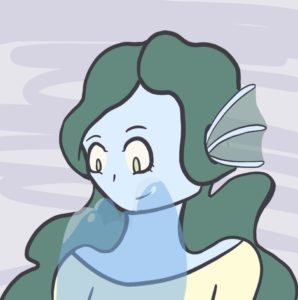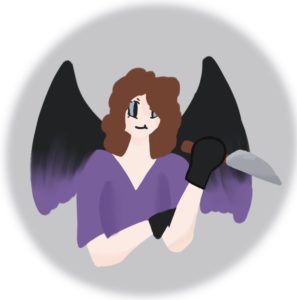D&D at Fairhaven School: Playing Online

This pandemic we’re in has made us adapt nearly everything in Fairhaven School as we transition to Virtual Fairhaven. Our democratic meetings have been easy to transition online, but some forms of play have been a bit more tricky. One game that was easy to move online, however, was D&D. Some of our students had already been playing some of their campaigns online, and I have been playing D&D online with a group of friends for years.
All you need to play D&D is a group of people, some character sheets, and some dice. The rest can all be what we call “theater of the mind”, where the Game Master (GM) will describe the scenario and the players will act out their characters and describe their actions. While there certainly is the choice to add visual aids, such as battle grids and mini figurines, they’re not essential for gameplay. It all takes place collectively in our imaginations, so it can easily be done over video chat.
However, now that we’re playing online, we can use virtual tabletops like Roll20 as a visual aid for our gameplay. This can create subtle but important differences in gameplay. While it can be nice to have pictures on screen for people to look at, it can also place restrictions based on what artwork we have access to, and the art can sometimes be used as a crutch to avoid describing a scene for the players’ minds. For the most part, though, the core aspects of the game remain unchanged.

As would normally be the case at Fairhaven School, some students will play D&D without the need for a staff member to be involved. For those who do want to play a campaign with a staff member as a Game Master, they can come to a staff member and organize a campaign together. In our first week of Virtual Fairhaven, we set a time for “D&D Sign-up” so we could all come together, form groups, and schedule when we would play. Currently I am GMing for three groups of students, who all play once a week. Some students have organized their own games outside of the Virtual Fairhaven platform. While many students are returning players, we have a fair amount of students that are trying D&D for the first time.

During these difficult times, it’s helpful to have a certain amount of escapism, and D&D is a great way to get lost in an imaginary world. Some students have opted to play campaigns that have absolutely nothing to do with what is going on in the world, but one group is playing a campaign based on “The Burning Plague”.
“The Burning Plague” is a classic Level 1 campaign that thousands of people have played before, and one I have adapted for new players several times over the past few years. The beginning of the story centers on a group of adventurers who must save a town that has come under the effects of a magical plague. I must have played through this campaign at least five times by now, but this time was different.
The players were mindful of the smallest things, like using magic to open doors so they would not have to touch the doorknobs. It was kind of amazing to watch these students think through all the things that might have been touched by infected NPCs (Non-Player Characters) and come up with strategies for how to avoid catching the plague themselves. Being so mindful of what we commonly touch was actually pretty handy practice for our current situation.

The students were able to identify how the plague was transmitted, find the source of the plague, and ultimately defeat the source of the magical plague. After the first chapter was over, we lamented that the pandemic could not be eliminated so easily.
We’re in this for the long haul, but we’re in it together. While we remain physically apart, it’s nice to know we can still play games like D&D with each other. In these strange times, it’s one of the most normal parts of our day.



